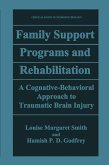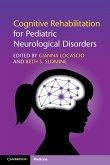The purpose of this book is to teach psychologists with a neuropsychology background about cognitive remediation, the evidence in the research literature, and how to develop and conduct a treatment plan and evaluate the effectiveness of the interventions. The approach is illustrated using the computer-assisted cognitive remediation program developed by the author (NeurXercise). Twenty-nine different cases are presented in depth, following the outline presented in the earlier portions of the book. Treatment planning emphasizes Luria's concepts of alternate functional systems and double dissociation. Pre- and post-treatment neuropsychological testing results are presented along with ecological validity and generalization to daily functioning. The cases are presented by etiology and each section concludes with what can be learned about that etiologic process from the cognitive remediation results. This section includes blast injuries, which are still being characterized in the literature, as well as effective treatment of patients with head injury, stroke, post-neurosurgical sequelae, co-morbid disorders, subcortical disorders, attention deficit disorder, and learning disabilities. The book identifies the most commonly used neuropsychological test instruments for evaluating cognitive deficits, discusses their input and output characteristics, and does the same for the NeurXercise computer-based exercises so that the connection between testing and treatment is easy to see and develop. In addition to discussing this in the appropriate sections of the book, these are summarized in the appendixes as a reference for correlating test findings and appropriate exercises for remediating deficits.









